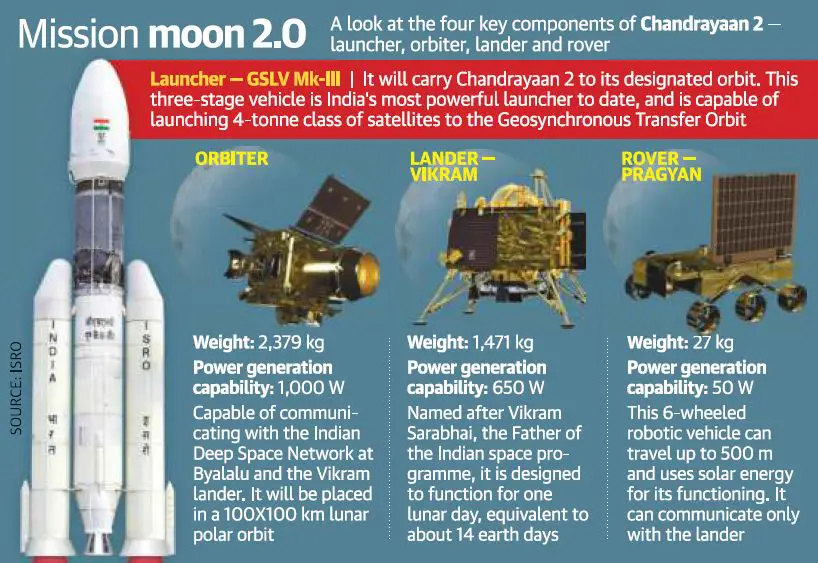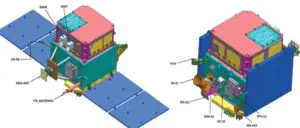Table of Contents
Chandrayaan-2 mission by ISRO | UPSC – IAS
ISRO is planning to launch Chandrayaan-2 mission by mid-July 2019. Chandrayaan-2 is India’s second lunar exploration mission after Chandrayaan-1. Developed by the Indian Space Research Organisation, the mission is planned to be launched to the Moon by a Geosynchronous Satellite Launch Vehicle Mark III. Chandrayaan-2 is a completely indigenous mission comprising of an Orbiter, Lander (called Vikram) and Rover (called Pragyan). It includes a lunar orbiter, lander and rover, all developed indigenously.
More About Chandrayaan-2 mission by ISRO | UPSC – IAS
- It will be launched by Geosynchronous Satellite Launch Vehicle Mk III (GSLV-F10).
- It will be ISRO’s first interplanetary mission to land a rover on any celestial body.
- The mission will attempt to soft land a rover 600 km from the lunar south pole.
- Only three countries have ever soft-landed on the moon— the United States, the U.S.S.R. and China.
- Primary Objective: To demonstrate the ability to soft-land on the lunar surface and operate a robotic rover on the surface.
- Scientific Goals include studies of lunar topography, mineralogy, elemental abundance, the lunar exosphere, and signatures of hydroxyl and water ice.
- Scientific Payload: It comprises a visible terrain mapping camera, a neutral mass spectrometer, a synthetic aperture radar, a near infrared spectrometer, a radio occultation experiment, a soft X-ray spectrometer and solar X-ray monitor.
- The lander will carry a camera, seismometer, thermal profiler, and Langmuir probe, while the rover will hold cameras, alpha-proton X-ray spectrometer, and a laser-induced ablation spectroscopy experiment to analyse the lunar soil.
- It will also carry NASA-owned laser retroreflector arrays that allow scientists to make precise measurements of the distance to the Moon.
Significant Components of Chandrayaan – 2 | UPSC – IAS
Chandrayaan-2 consists of an Orbiter, Lander and Rover, all equipped with scientific instruments to study the moon.
Orbiter
- The Orbiter will 100 km away from the moon, which will observe lunar surface and relay communication between Earth and the Lander.
- The orbiter is equipped with different kinds of camera to take create high-resolution three-dimensional maps of the surface, would remain in orbit for a year.
Vikram Lander
The mission’s lander is called Vikram named after Vikram Sarabhai (1919-1971) who is widely regarded as the father of the Indian space programme.
- It is the first time that ISRO is attempting to soft-land a module in extra-terrestrial space.
- The main challenge is in controlling its speed as it approaches the surface.
- Once the Lander and the Rover, enter the Moon’s gravity, they would be in a state of free fall.
- To enable a smooth landing, the speed of the Lander just ahead of touchdown should be 1 m/s (3.6 km/h) or less.
- The Lander will mainly study the moon’s atmosphere and look out for seismic activity.
Pragyaan Rover
The mission’s rover is called Pragyan (Wisdom). The rover’s mass will be about 27 kg (60 lb) and will operate on solar power.
- The 6-wheeled, AI Solar powered rover was designed, developed and build indigenously by ISRO.
- The rover will be landed in be landed closer to the Moon’s equator to receive more sunlight.
- Its primary objective will be to study the composition of the surface near the lunar landing site, and determine its abundance of various elements.
- Both the Lander and Rover are designed to work for only 14 days (1 lunar day).




